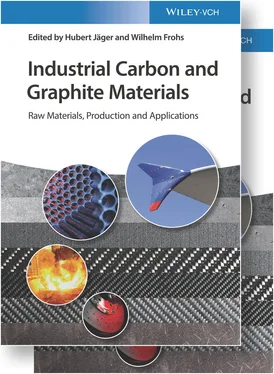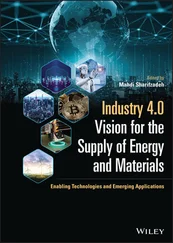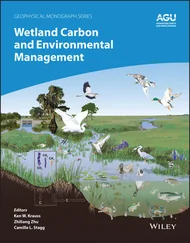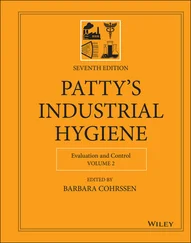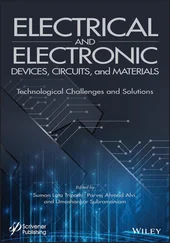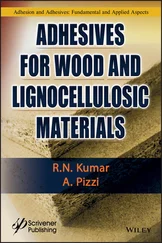Industrial Carbon and Graphite Materials
Здесь есть возможность читать онлайн «Industrial Carbon and Graphite Materials» — ознакомительный отрывок электронной книги совершенно бесплатно, а после прочтения отрывка купить полную версию. В некоторых случаях можно слушать аудио, скачать через торрент в формате fb2 и присутствует краткое содержание. Жанр: unrecognised, на английском языке. Описание произведения, (предисловие) а так же отзывы посетителей доступны на портале библиотеки ЛибКат.
- Название:Industrial Carbon and Graphite Materials
- Автор:
- Жанр:
- Год:неизвестен
- ISBN:нет данных
- Рейтинг книги:3 / 5. Голосов: 1
-
Избранное:Добавить в избранное
- Отзывы:
-
Ваша оценка:
- 60
- 1
- 2
- 3
- 4
- 5
Industrial Carbon and Graphite Materials: краткое содержание, описание и аннотация
Предлагаем к чтению аннотацию, описание, краткое содержание или предисловие (зависит от того, что написал сам автор книги «Industrial Carbon and Graphite Materials»). Если вы не нашли необходимую информацию о книге — напишите в комментариях, мы постараемся отыскать её.
Industrial Carbon and Graphite Materials — читать онлайн ознакомительный отрывок
Ниже представлен текст книги, разбитый по страницам. Система сохранения места последней прочитанной страницы, позволяет с удобством читать онлайн бесплатно книгу «Industrial Carbon and Graphite Materials», без необходимости каждый раз заново искать на чём Вы остановились. Поставьте закладку, и сможете в любой момент перейти на страницу, на которой закончили чтение.
Интервал:
Закладка:
24 Chapter 9Figure 9.1 Schematic model of activated carbon.Figure 9.2 Schematic pore diameter distributions of carbonaceous adsorbents....Figure 9.3 Pressure drop of molded activated carbon with different particle ...Figure 9.4 Pore size distribution of different activated carbons. —— Gas‐ph...Figure 9.5 Characterization of different raw materials. Figure 9.6 Shaft furnace.Figure 9.7 Rotary kiln for steam‐activation process. (a) Steam. (b) Gas. (c)...Figure 9.8 Multiple‐hearth furnace. (a) Raw material silo. (b) Inlet. (c) Bu...Figure 9.9 Fluidized‐bed furnace. (a) Raw material silo. (b) Inlet. (c) Comb...Figure 9.10 Flow sheet for production of pelletized activated carbon. (a) Cr...Figure 9.11 Production steps of formed activated carbon. Figure 9.12 Gas‐ and liquid‐phase applications of carbonaceous adsorbents.Figure 9.13 Gas‐phase applications of carbonaceous adsorbents.Figure 9.14 Linear adsorption isotherm for toluene. Figure 9.15 Flow sheet of a solvent recovery unit. (a 1) Adsorber 1. (a 2) Ads...Figure 9.16 Temperature diagram for the carbon bed of a solvent recovery uni...Figure 9.17 Drinking water treatment with powdered and granular activated ca...
25 Chapter 10Figure 10.1 Scanning electron microscopy image of two carbon black aggregate...Figure 10.2 Carbon blacks of different primary particle sizes and specific s...Figure 10.3Figure 10.3 Particle distribution curves for the carbon blacks of...Figure 10.4Figure 10.4 Furnace blacks of different aggregation degrees.Figure 10.5 Phase‐contrast electron micrograph of a carbon black aggregate....Figure 10.6 SEM image of a graphitized carbon black.Figure 10.7 Phase‐contrast electron micrograph of graphitized carbon black....Figure 10.8 Phase‐contrast micrograph of an inversion black.Figure 10.9 Scanning tunneling micrograph of N234.Figure 10.10 Scanning tunneling micrograph of an inversion carbon black.Figure 10.11 Mean particle sizes of different carbon blacks. 11 nm: gas blac...Figure 10.12 Mean particle sizes and typical applications of various carbon ...Figure 10.13 Electron micrograph of the carbon black Printex®55. Printex 55 ...Figure 10.14 Particle size distribution diagram.Figure 10.15 Relative particle frequency vs. the ratio d i/ d 50for various fu...Figure 10.16 Relative primary particle frequency vs. the ratio d i/ d 50for ca...Figure 10.17 Transmission electron micrograph of acetylene black.Figure 10.18 TEM images of the furnace blacks N347 (a) and N326 (b) in powde...Figure 10.19 M Yvalue vs. primary particle size.Figure 10.20 Surface oxides on carbon black. The dotted lines indicate that ...Figure 10.21 Furnace black process. (a) Furnace black reactor, (b) heat exch...Figure 10.22 Furnace black reactors. (A) Restrictor ring reactor, (B) ventur...Figure 10.23 Vertical reactor for manufacturing semireinforcing blacks. (a) ...Figure 10.24 Typical energy balance for the manufacture of a reinforcing bla...Figure 10.25 Pelleting machine.Figure 10.26 Furnace black process.Figure 10.27 Degussa gas black process. (a) Oil evaporator, (b) burner, (c) ...Figure 10.28 Lampblack process. (a) Vessel filled with feedstock, (b) conic...Figure 10.29 Thermal black process. (a) Thermal black reactor, (b) quench to...Figure 10.30 Equipment for the oxidative aftertreatment of carbon black in a...Figure 10.31 Adsorbed nitrogen volume V avs. the statistical layer thickness...Figure 10.32 Aggregate area vs. DBP absorption.Figure 10.33 Void volume of N550 depending on the pressure.Figure 10.34 Application areas of carbon blacks and shares of total consumpt...Figure 10.35 Global capacity and consumption of carbon black.Figure 10.36 Development of carbon black production in different regions.
26 Chapter 11Figure 11.1 The history of commercial carbon fibers [].Figure 11.2 The market penetration and price development of carbon fibers.Figure 11.3 Graphitic carbon layers with sp 2hybridization. (A) Graphite: he...Figure 11.4b11.4aFigure 11.4b Stagnation in enhancement of carbon fibre prop...Figure 11.4 Principal calculation of mechanical properties based on a quantu...Figure 11.5 Specific tensile modulus (Young's modulus divided by density) of...Figure 11.6 Schematic overview of different carbon fiber types (http://www.c...Figure 11.7 Coalescence of disklike liquid crystals in pitch.Figure 11.8 Manufacture of polyacrylonitrile fibers [46]. Wet spinning, lowe...Figure 11.9 (a) Melt spinning process. (b) Solvent spinning process. (c) Dry...Figure 11.10 FESEM images of the two different morphologies of PAN fibrils (...Figure 11.11 Schematic model of the fibril structures of PAN fibers and the ...Figure 11.12 Color change of polyacrylonitrile during stabilization reaction...Figure 11.13 (a) Increase of density of PAN during thermal treatment in air ...Figure 11.14 Mass and heat transport influenced by gas–solid body reactions ...Figure 11.15 (a) Differential scanning calorimetry (DSC) (principle). (b) Ex...Figure 11.16 The reaction of stabilization is double or triple of the oxyhyd...Figure 11.17 The chemistry of stabilization and carbonization (simplified) [...Figure 11.18 Elemental composition correlated with the reaction time and sta...Figure 11.19 Exemplary temperature profiles from scientific and patent liter...Figure 11.20 Isothermal/non‐isothermal linear and hyperbolic temperature pro...Figure 11.21 Target density of stabilized PAN after isothermal/non‐isotherma...Figure 11.21Figure 11.21 Target density of 1.40 g/cm 3of stabilized PAN corr...Figure 11.22b11.22a Basic design and cross section of the centrotherm low-pr...Figure 11.23 The shrinkage behavior of PAN in air up to 340 °C [70].Figure 11.24 The shrinkage behavior of PAN with 6% MA and 2% ITA for differe...Figure 11.25 Correlation of shrinkage and heat flow measurement [66].Figure 11.26 Equilibrium state between stretching entanglement and entropic ...Figure 11.27 Molecular models as basis for shrinkage prediction in fiber axi...Figure 11.28 Elongation of the polymer chain overcompensating the reaction s...Figure 11.29 Structural model of PAN fibers.Figure 11.30 Elastic behavior of PAN fibers with 6% MA and 2% ITA during sta...Figure 11.31 Process control of PAN fibers during stabilization (stretching/...Figure 11.32 Carbon fiber process (schematically) [51].Figure 11.33 Carbonization furnace at SGL Technic Ltd. [51].Figure 11.34 Temperature profile in carbonization furnace.Figure 11.35 Maximum C‐fiber yield correlated with fiber density after stabi...Figure 11.36 Maximal C‐fiber yield correlated with residence time at differe...Figure 11.37 Tensile strength after different stabilization treatments. (a) ...Figure 11.38 Shrinkage during carbonization as indicator for a sufficient st...Figure 11.39 Density after carbonization as indicator for a sufficient stabi...Figure 11.40 The effect of oxygen uptake during stabilization on the strengt...Figure 11.41 Effects of heat post‐treatment of carbon fibers (PAN + 6% MA + ...Figure 11.42 Oxide complexes on surface‐treated carbon fibers and their affi...Figure 11.43 Gases (CO 2, CO) liberated during thermal desorption of surface‐...Figure 11.44 Amount of surface oxides formed by thermal, wet, and anodic sur...Figure 11.45 Thermal oxidation rates (Arrhenius plots) of HM‐ and HT‐type ca...Figure 11.46 Specific strength and specific modulus of various commercial ca...Figure 11.47 Influence of gauge length at test samples (carbon fibers/SiC fi...Figure 11.48 Influence of fiber diameter on tensile strength of commercial c...Figure 11.49 High‐resolution TEM of highly graphitized carbon structure [95]...Figure 11.50 TEM bright‐field images (cut perpendicular to the fiber axis) [...Figure 11.51 Young's modulus of various types of carbon fibers correlated wi...Figure 11.52 Mean interlayer distances c /2 of various commercial carbon fibe...Figure 11.53 Effect of high‐temperature heat treatment on the ultrastructure...Figure 11.54 Lattice defects in carbon fibers (schematically).Figure 11.55 Morphological defects within a carbon fiber structure model [98...Figure 11.56 Structural models of carbon fibers. (a) Two‐dimensional model p...Figure 11.57 Structural development of the graphitic layers within the carbo...Figure 11.58 AFM image of graphite (a). The hexagonal carbon rings and the c...Figure 11.59 Influence of the final heat treatment temperature on the degree...Figure 11.60 LOI values of nonflammable textile fibers[110].Figure 11.61 Thermal stability of PANOX® compared with aramid and carbon fib...Figure 11.62 Fiber elongation behavior of PANOX® [110]..Figure 11.63 Protective clothing based on infusible and inflammable stabiliz...Figure 11.64 Fire‐blocking felts for motor vehicles [109].Figure 11.65 Carbon–carbon aircraft brake disks based on stabilized polyacry...Figure 11.66 400k heavy tows with 50k subtows [109].Figure 11.67 50k heavy tows for production of carbon fiber noncrimped fabric...Figure 11.68 400k heavy tows deposited in boxes [109].Figure 11.69 Cut fibers (a) and milled fibers (b) [109].Figure 11.70 Conductivity of polycarbonate with carbon fiber loading [111]....Figure 11.71 Relative mechanical properties of carbon fiber‐filled polycarbo...Figure 11.72 BMW i8 electrical hybrid sports car [112].Figure 11.73 Brake disk for the Porsche Macan S [117].Figure 11.74 Wind energy farms [118].Figure 11.75 Unidirectional carbon fiber tape fixed with a polyester yarn [1...Figure 11.76 Carbon fiber composites in fuselage and wings [118].Figure 11.77 Carbon fiber composites in snowboards [118].Figure 11.78 Robotic arm made of CFRP [118].Figure 11.79 Carbon‐based knitted Fabric[120].Figure 11.80 Typical properties of epoxy prepreg with SIGRAFIL continuous ca...Figure 11.81 Increase of bending strength for a PA6 matrix with a thermoplas...Figure 11.82 Global demand of carbon fibers in ktons from 2009 to 2021 (est...Figure 11.83 Carbon fiber capacity by manufacturer in ktons (2014) [125]....Figure 11.84 Carbon fiber demand by applications in ktons (2014) [121,125]....Figure 11.85 Primary energy demand for CFRP‐production (duromeric resin) app...
Читать дальшеИнтервал:
Закладка:
Похожие книги на «Industrial Carbon and Graphite Materials»
Представляем Вашему вниманию похожие книги на «Industrial Carbon and Graphite Materials» списком для выбора. Мы отобрали схожую по названию и смыслу литературу в надежде предоставить читателям больше вариантов отыскать новые, интересные, ещё непрочитанные произведения.
Обсуждение, отзывы о книге «Industrial Carbon and Graphite Materials» и просто собственные мнения читателей. Оставьте ваши комментарии, напишите, что Вы думаете о произведении, его смысле или главных героях. Укажите что конкретно понравилось, а что нет, и почему Вы так считаете.
